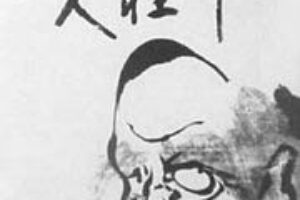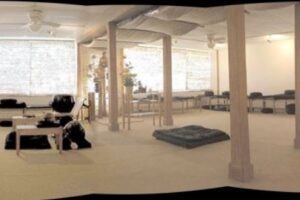A Newsletter dedicated to prison sangha practitioners and those whose lives are touched by them.
Zen Teaching
“Now I would like to talk about our zazen posture. When you sit in the full lotus position, your left foot is on your right
thigh, and your right foot is on your left thigh. When we cross our legs like this, even though we have a right leg and a
left leg, they have become one. The position expresses the oneness of duality: not two, and not one. This is the most
important teaching: not two, and not one. Our body and mind are not two and not one. If you think your body and
mind are two, that is wrong; if you think that they are one, that is also wrong. Our body and mind are both two and
one.”
– From Zen Mind, Beginner’s Mind by Shunryu Suzuki

Questions and Answers with Taiun Michael Elliston Roshi
Question: I am writing to request to be put on your mailing list for your newsletter. I’ve been studying Buddhism for a year and
just made it to prison for a long stay of 216-320 months. I’ve been a Satanist most of my life and found the Buddha in jail. I’m very
happy with my change, I just wish I would have found him sooner. I’m at a very hard prison where they prey on the weak. I look
like a muscle bound biker so I really don’t get messed with but it’s going to happen. How does a little piece of love survive in a pit
full of demons??? All this is new to me and I don’t know how to act. I don’t want to hurt anybody anymore. When they roll,
they roll deep and hard with shanks. Is it bad karma to defend yourself against death?
I feel like a child all over again learning how to function in the world. I need all the help I can get.
Answer: In Buddhism, Zen Buddhism in particular, we have to begin at home, with learning to love oneself. But this does not
mean unreservedly, and it does not mean that there is an actual self to love, nothing to defend against death, which is inevitable,
only a matter of time.
The Metta Sutta, or “Loving Kindness Sutra,” attributed to Shakyamuni Buddha, has the refrain, “May all beings be happy.” But
it does not mean that somehow we can magically transform the world so that there is no suffering of any kind. May all beings be
happy with the way existence is, not some hopeful, wished-for paradise. Existence is characterized by the “three marks” of the
nature of suffering (Skt. dukkha) — namely impermanence, imperfection, and insubstantiality — which apply to all beings without
exception, owing to the dynamic of emptiness (Skt. shunyatta), which is the engine of change in the universe.
The Heart Sutra declares that, given the reality of emptiness of a separate self in anything, there is “no suffering, no end of
suffering.” But this is not a contradictory statement. That is, the natural suffering of aging, sickness and death are built-into this
existence. However, the unnecessary suffering we inflict upon each other, owing to the “three poisons” of greed, hate or anger,
and delusion or folly, can come to an end, through our awakening to this reality. In Soto Zen, the main path to this insight is
through upright, seated meditation. That is where you will find the answers to your questions. Sit still enough, for long enough,
and this will become clear. See if you can start a sitting group and we can provide instructions.
Historically, ASZC served inside the local prisons and the Gassho Newsletter was published by inmates, for other inmates, with an outside assist from other members of ASZC. Due to COVID-19 and limited volunteers, we no longer have the capacity to serve in this way. However, here is how we assist prison sangha practitioners in their practice:
-
Answer their practice questions. We have included a Q & A in this issue and any questions we publish will be answered by our founding teacher, Taiun (Great Cloud) Elliston Roshi (venerated teacher), as well as other Zen teachers.
-
Provide resources within the newsletter. While we cannot mail money, books, or anything to an individual, we are able to provide a resource section in each issue that can help assist in furthering your practice. This issue provides the information necessary to receive a free subscription of Lion’s Roar magazine (Buddhist).
-
Images of forms. In Buddhism, there are many forms for Zazen (sitting meditation), and as such, a graphic in this issue may help as they develop Zazen practice. We may also provide iconic images of Buddhas or Bodhisattvas for reflection.








